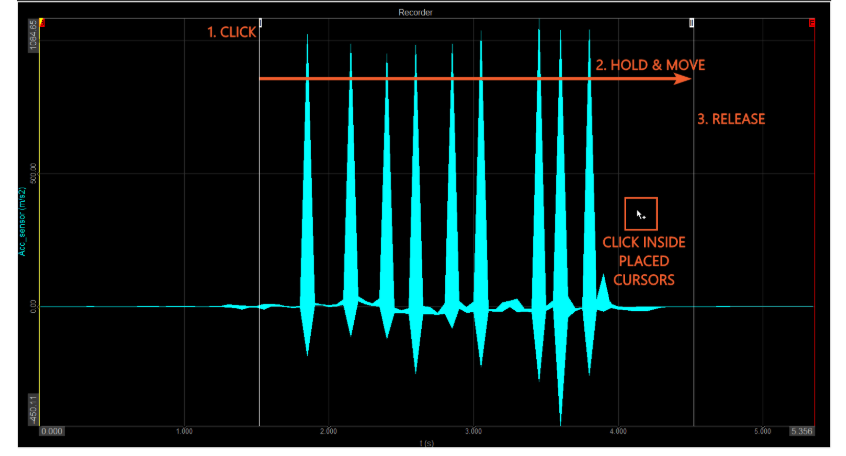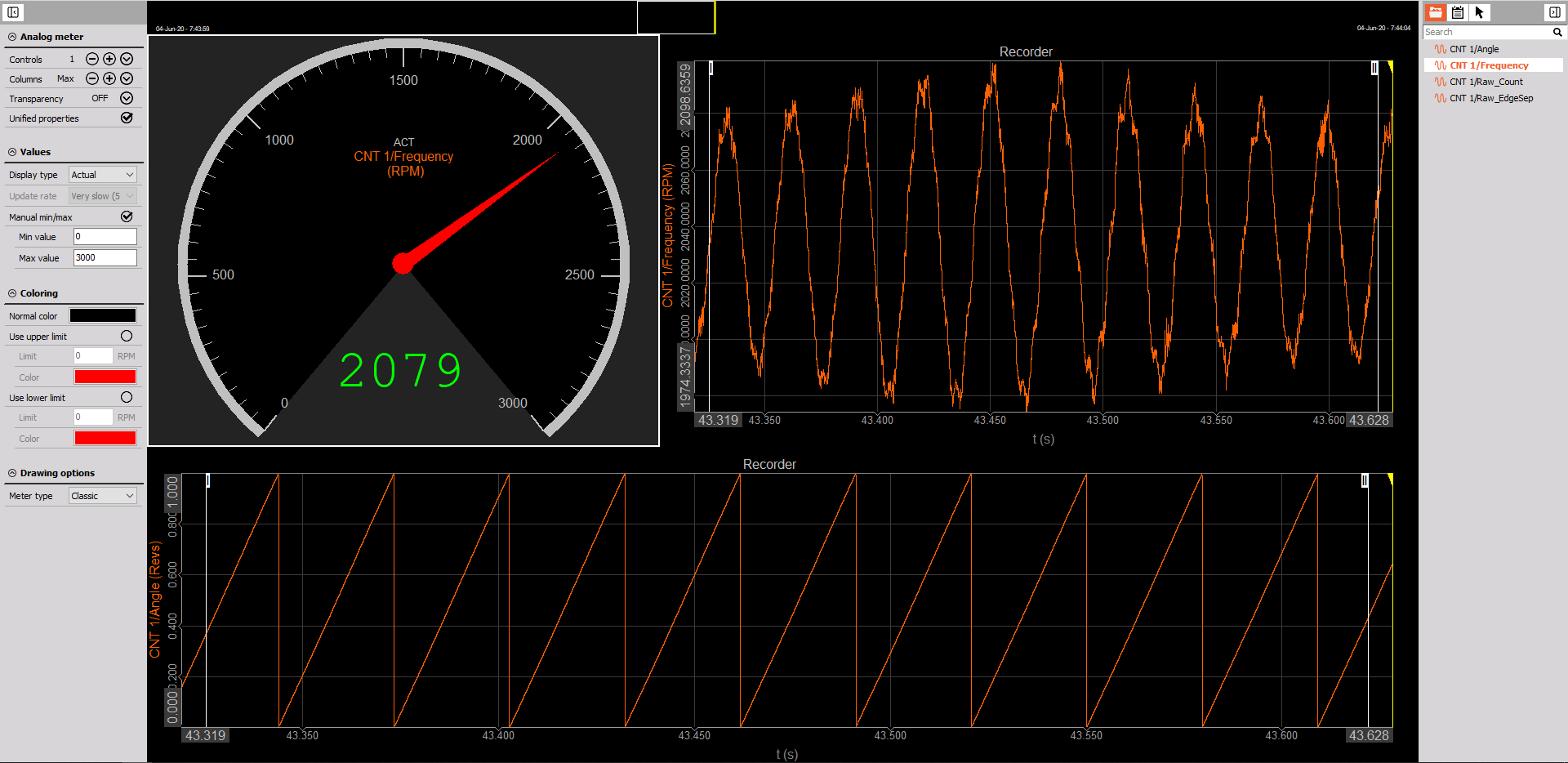We connect a strain gage on one of the STG inputs of our SIRIUS.
 Image 12: Tuning forks with strain gage coupled to the SIRIUS device
Image 12: Tuning forks with strain gage coupled to the SIRIUS device
A "tuning fork" is normally used for tuning the instruments of an orchestra. It is tuned to 440Hz, which is the standard pitch (note 'a'). In our demo tool, a quarter bridge strain gage with either 120 or 350 ohms resistance (is marked on the connector) is mounted on the steel, therefore we can measure the strain of the vibrations.
 Image 13: Strain gage and tuning forks specification
Image 13: Strain gage and tuning forks specification
Open the Setup of the channel where the tuning fork is connected to.
 Image 14: Tuning fork channel setup
Image 14: Tuning fork channel setup
In the left upper section, we find the amplifier settings. Set to "Bridge" and "Quarter bridge 3-wire", either 120 or 350 ohm (written on connector). You directly see the according circuitry, how to connect the quarter bridge on the 9pin DSUB connector.
Select an appropriate range, if you use the highest, you don't have to care about overload (input voltage exceeding amplifier range). We use a smaller range, e.g. 20mV/V. The higher ADC is now working in the 20mV/V input range, while the lower ADC input range is 5% of it, 1 mV/V simultaneously, so you get an amazing dynamic.
On the right side - Sensor settings, we select Physical quantity Strain or Stress and the unit. If you have a sensor with a TEDS chip, and all the settings are read from it automatically.
Balance sensor
Before starting the measurement, we need to balance the strain gage. Click ''Balance'', the output will go to 0 um/m, and the offset will be shown next to the button.
 Image 15: Click on the Balance button to balance sensors before the measurement
Image 15: Click on the Balance button to balance sensors before the measurement Sampling rate
Because the natural frequency of the tuning fork is 440Hz, we have to think of which sample rate we want to digitize the signal. In theory, a factor of 2 (=880Hz, Nyquist criteria) would be sufficient, in praxis however it depends very much how the signal looks like. We suggest a factor of 10 or even 20 to get a good result.
So, the sample rate is still fine with 20 kHz.
Go again to "Storing", specify a filename, e.g. "tuning_fork_measurement". Then click "Store".
Scope Widget
Now we switch to the Custom... display and add the Scope widget to it. Maximize it over the whole screen.
 Image 16: Add a Scope widget
Image 16: Add a Scope widget
 Image 17: Scope display can be randomly adjusted
Image 17: Scope display can be randomly adjusted
Switch to the Scope screen. Hit the tuning fork, that we have an oscillating signal, then click the y-axis label for min/max scaling.
Set the trigger to Auto, in the properties of the left. Move the trigger level up- or downwards with the mouse, until you get a triggered image.
With the +/- buttons on the x-axis  , you can adjust the time window shown.
, you can adjust the time window shown.
Customizing Displays
Now we want to add an FFT instrument, to measure the resonance frequency of the tuning fork. Usually the Custom... screens are always empty so you fill them with any widgets, but basically no matter what display is, every display can be adapted to your needs.
Design mode
Go to the ''Design mode'', either by clicking the ''Design'' tab on the top or just starting adding the Widgets by clicking on ''Widgets'' tab.
 Image 18: Enable Design mode by clicking on a Design button or by adding widgets to the display
Image 18: Enable Design mode by clicking on a Design button or by adding widgets to the display
In the Widget search window type in FFT and add an FFT widget on a display.
Automatically the channel ''AI 5'' is assigned to the instrument as it is the only ''Used'' channel we had.
As you are in ''Design mode'' you can now freely adapt the size of the FFT and move it to your favorite location on the screen. After you fit the FFT diagram to your needs, exit the Design mode by clicking on a Design button.
FFT instrument
Following steps help to get your data displayed quickly with the FFT:
- Y scale type set on ''Log''.
- Adjust Y-axis according to the range you are measuring. In this case, it is set from 0.001 to 1000 um/m.
- Click on the measured peak when the tuning for is vibrating. The values of the peak will be displayed, showing the maximum of 439,5 Hz with the according to amplitude.
 Image 19: FFT widget
Image 19: FFT widget
Analysis folder View
After stopping the measurement, click on the Analysis button, and go to the Data files tab. You will see the Analysis folder view, which is like an Explorer. On the bottom, you get information about the channels and data header, and with the powerful search fields, you easily find the data file you are looking for.
 Image 20: Measurement data properties
Image 20: Measurement data properties To learn more about strain gages and how to measure strain and stress, visit our Strain measurement tutorial.





 button. The
button. The 














 , you can adjust the time window shown.
, you can adjust the time window shown.






















